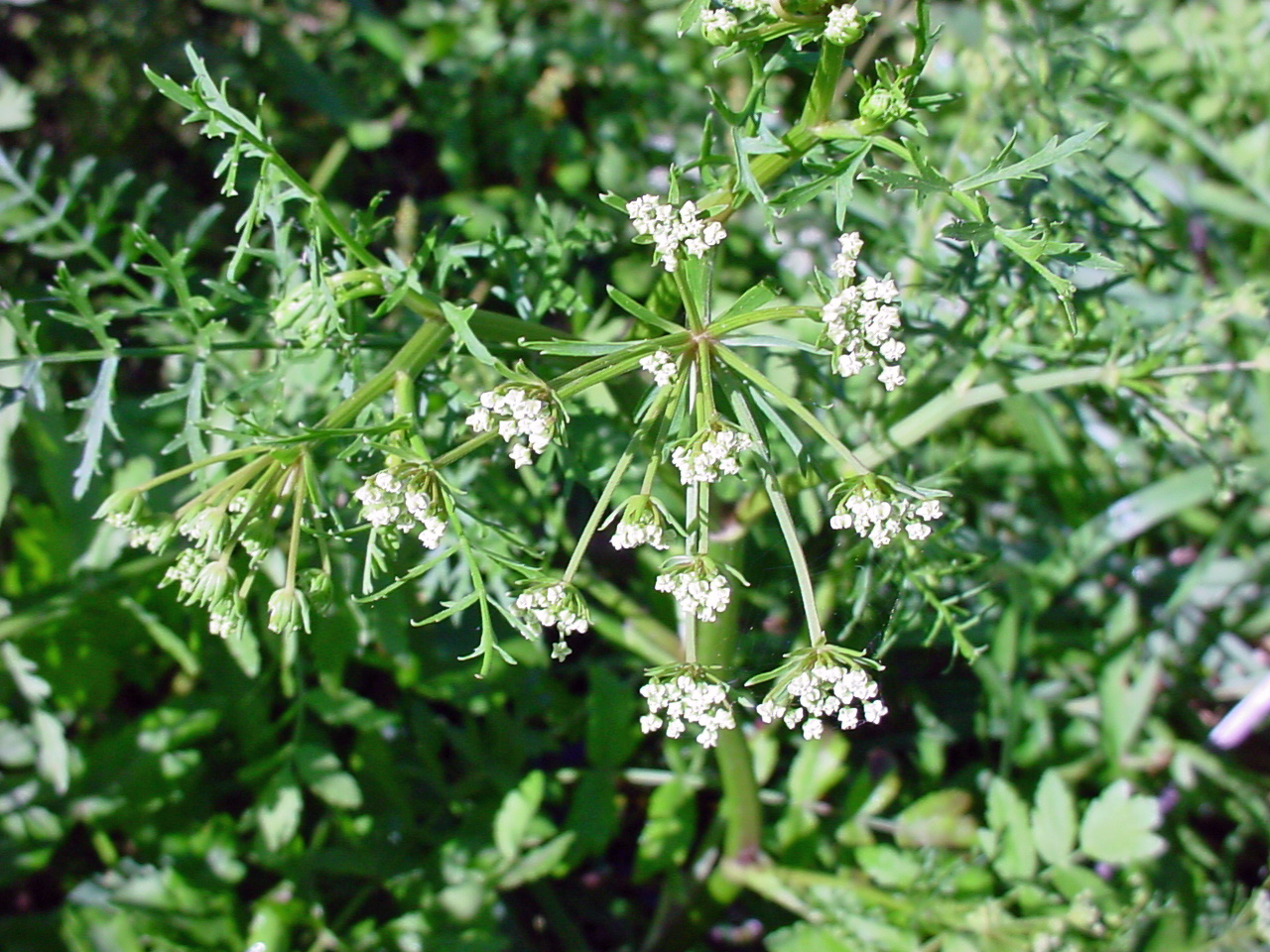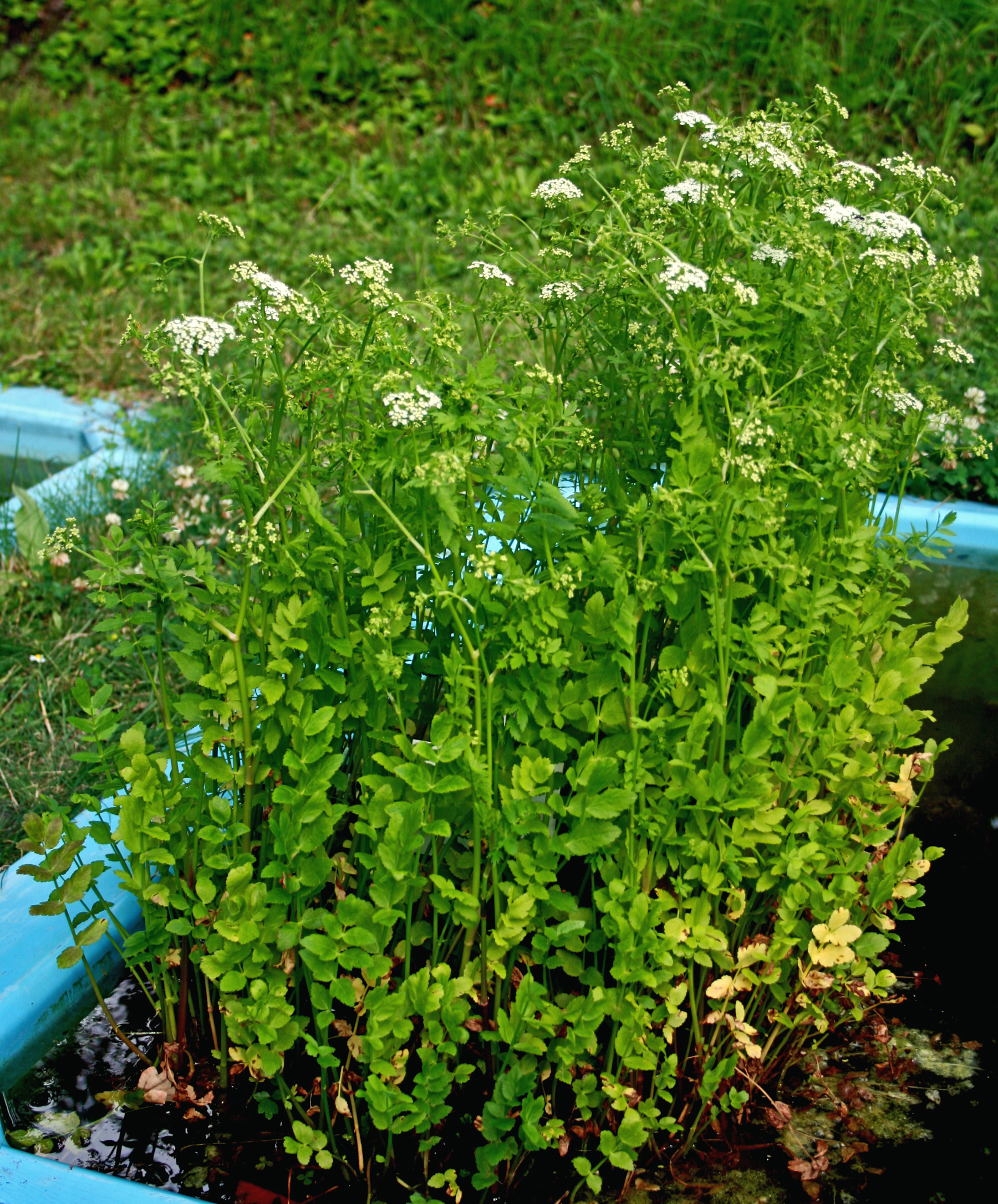Berula
Narrow- Wish ( Berula erecta ), illustration
The Narrow- Wish ( Berula erecta, Syn Sium erectum Huds. ), Also called Berle, is a widespread marsh plant. It is the only species of the genus Berula, from the carrot family ( Apiaceae ).
Description
The Narrow- Wish is a slightly toxic, year-round green, perennial, herbaceous plant, reaching the heights of growth of about 30 to 80 centimeters. This marsh plant ( Helophyt ) may occur depending on the location in two very similar marsh or floating leaf shapes. The floating forms flourish rare and multiply by runners. The Narrow- Wish has a terete, provided with fine grooves stems. The always- pinnate leaves are lanceolate at the upper part of the plant and have a serrated edge, whereas the lower ones are ovate.
The white umbels are on short stalks along the stem against a foliage leaf. The cones are made up of ten to twenty umbellules, envelope and Hüllchenblätter are numerous. The fruits are up to two millimeters long, egg-shaped and brownish in color. The plant flowers from July to August. It is pollinated by insects ( entomophily ) and its seeds are spread by water ( Hydrochorie ).
Similar species are the Broad- Wish ( Sium latifolium ) ( it has an angular furrowed stems and forms no spurs ) and the Knotenblütige celery ( Apium nodiflorum ).
Ecology
The Narrow- Wish is kalkstet and salt ertragend. The Hemikryptophyt rooted maximum still at a water depth of 1.5 m. The usually low (rarely to 80 cm high ) plants emerging from the water and form by stolons extensive stocks. But sometimes they also live in hiding as hydrophyte. The species survived as submerged, herbaceous stock or at least with the help of undergraduate buds. In the former case, it provides shelter for hibernating amphibians and fish as their spawning ground.
Distribution and location
The Narrow- Wish is widespread in the temperate zones, it is found in Europe, Asia, the Americas and in the montane stages of the African tropics.
The Narrow- Wish grows primarily at waters edge, but also in shallow streams, the edges of water bodies and in ditches. In Central Europe, it rises to altitudes of about 750 meters. It often occurs together with the flood ends Buttercup ( Ranunculus fluitans ), the bur reed ( Sparganium ) and the swath ( Glyceria ).
Documents
- Henning Haeupler, Thomas Muer: Image Atlas of ferns and flowering plants of germany. Ulmer, Stuttgart 2000, ISBN 3-8001-3364-4, p 369
- Erich Oberdorfer: Phytosociological Exkursionsflora. 7 edition. Ulmer, Stuttgart 1994, ISBN 3-8252-1828-7, p 712
- R. Duell / H. Kutzelnigg: Pocket Dictionary of Plants in Germany and neighboring countries, 7th Edition, Quelle & Meyer Verlag, 2011, ISBN 978-3-494-01424-1








